Multiple intercepts of greater than 10% copper, at a 3% cut-off,
highlight the high-grade nature of the thick, flat-lying, shallow,
chalcocite-rich core of the Kakula Discovery zone
KOLWEZI, DEMOCRATIC REPUBLIC OF CONGO – Robert Friedland, Executive Chairman of Ivanhoe Mines (TSX: IVN), and Lars-Eric Johansson, Chief Executive Officer, today announced assay results from another twelve holes of the ongoing 2016 drilling campaign at the Kakula Discovery on the company’s Tier One Kamoa Copper Project, near the mining centre of Kolwezi in the Democratic Republic of Congo (DRC). The Kamoa Project is a joint venture between Ivanhoe Mines and Zijin Mining.
“The consistent frequency of thick intersections of exceptionally-high-grade copper mineralization from both infill and step-out drill holes enhances our absolute confidence that Kakula is a game-changing discovery for the Kamoa Project,” Mr. Friedland said.
“While some of the recent drill intercepts are up to 20 metres thick at a 1% cut-off grade, if we focus only on the best intercepts of six metres – which is considered to be an optimal initial mining width for a flat-lying, stratabound deposit like Kakula – six of the eight holes drilled within Kakula’s high-grade core returned grades of between 6% and 11% copper.”
The Kakula Discovery remains open along a northwesterly-southeasterly strike, while high- grade copper mineralization has been outlined along a corridor that now is more than three kilometres in length. The high-grade copper zone is less than 300 metres below surface in the northwest section, and gently dips to a depth of approximately 525 metres in the southeast (see cross-sections in figures 9 and 10). Highlights of the latest drill results, which reinforce the exceptional grades and shallow, flat-lying geometry of the Kakula mineralized zone, include:
- DD1016 intersected 8.75 metres (true width) of 9.84% copper at a 3.0% copper cut-off, beginning at a downhole depth of 362.0 metres; 9.27 metres (true width) of 9.11% copper at a 2.5% copper cut-off; 10.22 metres (true width) of 8.49% copper at a 2.0% copper cut-off; and 18.78 metres (true width) of 5.32% copper at a 1.0% copper cut-off.
- DD1020 intersected 5.29 metres (true width) of 10.33% copper at a 3.0% copper cut-off beginning at a downhole depth of 424.0 metres; 6.29 metres (true width) of 9.15% copper at a 2.5% copper cut-off; 6.29 metres (true width) of 9.15% copper at a 2.0% copper cut-off; and 7.61 metres (true width) of 7.81% copper at a 1.0% copper cut-off.
- DD1021 intersected 8.34 metres (true width) of 7.82% copper at a 3.0% copper cut-off, beginning at a downhole depth of 377.0 metres; 9.31 metres (true width) of 7.31% copper at a 2.5% copper cut-off; 12.32 metres (true width) of 6.11% copper at a 2.0% copper cut-off; and 16.79 metres (true width) of 4.86% copper at a 1.0% copper cut-off.
- DD1023 intersected 4.06 metres (true width) of 8.57% copper at a 3.0% copper cut-off, beginning at a downhole depth of 360.0 metres, beginning at a depth of 377.0; 7.39 metres (true width) of 6.33% copper at a 2.5% copper cut-off; 13.96 metres (true width) of 4.14% copper at a 2.0% copper cut-off; and 18.58 metres (true width) of 3.49% copper at a 1.0% copper cut-off.
- DD1026 intersected 14.66 metres (true width) of 7.66% copper at a 3.0% copper cut-off, beginning at a downhole depth of 333.8 metres; 15.48 metres (true width) of 7.39% copper at a 2.5% copper cut-off; 16.97 metres (true width) of 6.94% copper at a 2.0% copper cut-off; and 18.57 metres (true width) of 6.49% copper at a 1.0% copper cut-off.
- DD1032 intersected 4.30 metres (true width) of 10.89% copper at a 3.0% copper cut-off, beginning at a downhole depth of 525.3 metres; 5.04 metres (true width) of 9.66% copper at a 2.5% copper cut-off; 5.04 metres (true width) of 9.66% copper at a 2.0% copper cut-off; and 6.04 metres (true width) of 8.31% copper at a 1.0% copper cut-off.
Kakula copper mineralization – consistently bottom-loaded and chalcocite dominant
The consistent, bottom-loaded nature of Kakula mineralization supports the creation of selective mineralized zones at cut-offs of between 1.0% and 3.0% copper, and potentially higher. The recent assay results are shown at various cut-offs in Table 1, while the accumulations of copper and thicknesses of mineralized intercepts (grade and drilled thickness) at 1.0%, 2.5% and 3.0% cut-offs are shown in figures 6 through 8.
The Kakula copper mineralization displays vertical mineral zonation from chalcopyrite (approximately 35% copper), to bornite (approximately 63% copper) and to chalcocite (approximately 80% copper), with the highest copper grades associated with the siltstone unit consistently characterized by chalcocite-dominant mineralization (see Figure 4 for strip-logs showing typical Kakula-style mineralization in holes DD1021, DD1026 and DD1032).
Chalcocite (copper sulfide, Cu2S) is a high-tenor mineral that is opaque and dark-gray to black with a metallic lustre (see figures 1 and 3 for examples of high-grade chalcocite drill core from Kakula). Chalcocite is considered to be the most valuable copper mineral because of its very high percentage of contained copper by weight (its tenor – or the percentage of the mineral that is actual metal to be extracted – is 80% copper by weight) and also its capacity to produce an exceptionally clean, high-grade concentrate.
Current site visit by analysts prompted by Kakula’s April 11, 2016, drilling results
Mr. Friedland also reported that, for the first time since the Kakula Discovery was announced earlier this year, the Kamoa Project is hosting a visit by mining analysts from two prominent Canadian mining investment banks. The analysts are reviewing the mine development and construction progress at the planned mine at Kansoko Sud, exploration and in-fill drilling results at the game-changing Kakula Discovery, the parameters for the planned, initial mineral resource estimate for Kakula scheduled for around the end of September 2016, and potential locations for a planned box cut at Kakula.
Figure 1. Drill core from DD1049 with disseminated chalcocite in diamictite at a depth of 422 metres (chalcocite is approximately 80% copper by weight).
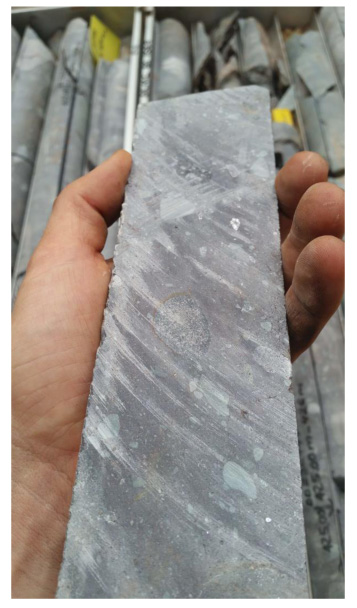
Step-out drilling testing the extension of the high-grade mineralization beyond the current three-kilometre strike length
Two rigs are drilling step-out holes to the southeast of Kakula’s currently defined high-grade core, looking to extend the high-grade mineralization beyond the current three-kilometre strike length. Two more rigs are drilling step-out holes further to the northwest to test the extension of the high-grade core in that direction.
Two other rigs are drilling in-fill holes and one is drilling a large-diameter core hole for the second phase of metallurgical test work. The initial metallurgical test results received in July 2016 from a sample of drill core from the Kakula Discovery zone achieved copper recoveries of 86% and produced a copper concentrate with an extremely high grade of 53% copper. The July results also indicated that material from Kamoa’s Kakula and Kansoko zones could be processed through the same concentrator plant, which would yield significant operational and economic efficiencies.
Earlier metallurgical testwork indicated that the Kamoa concentrates contain extremely low arsenic levels, by world standards: approximately 0.02%. Given this critical, competitive marketing advantage, Kamoa’s concentrates are expected to attract a significant premium from copper-concentrate traders for use in blending with concentrates from other mines. The Kamoa concentrates will help to enable high-arsenic concentrates from mines in Chile and elsewhere to meet the limit of 0.5% arsenic imposed by Chinese smelters to meet China’s new environmental restrictions.
Box-cut planning now underway for underground access at Kakula
Approximately 21,000 metres of drilling has been completed since the current Kakula drilling program began earlier this year. The current plan is to drill a total of approximately 34,000 metres this year, although expansion plans are being developed.
The main objective of the current drilling program at Kakula, using seven rigs, is to confirm and expand a thick, flat-lying, bottom-loaded zone of very-high-grade, stratabound copper mineralization at the southern part of the Kakula Discovery area (see Figure 2) that has the potential to be amenable to bulk, mechanized mining and therefore could have a significant, positive impact on the Kamoa Project’s future development plans. The 60-square-kilometre Kakula exploration area is approximately 10 kilometres southwest of Kamoa’s planned initial mining area at Kansoko Sud.
To help advance the ongoing evaluation of Kakula, the Kamoa technical team is proceeding with the engineering and preparation of tender documents for the construction of a box cut at Kakula to accommodate decline ramps that will provide underground access to the deposit. Several possible box-cut sites at Kakula have been identified and geotechnical drilling will be undertaken to determine the best location.
Development at Kamoa’s planned initial mining area at Kansoko Sud continues to progress ahead of plan
Underground mine development at Kamoa’s planned initial mining area at Kansoko Sud is progressing ahead of plan and within budgeted costs. The twin declines, incorporating both a service and a conveyor tunnel, each have advanced more than 160 metres since the first excavation blast was conducted in May of this year. Development of the underground mine is designed to reach the high-grade copper mineralization at the Kansoko Sud deposit during the first quarter of 2017.
A dewatering system, including pumps, pipes and valves, is being installed in both declines before the onset of the rainy season in October.
A contract has been awarded to a local company for the supply and construction of eight kilometres of 11-kilovolt (kV) overhead lines, cabling reticulation and five mini-substations for the distribution of 11kV of electricity to the mine, camps, offices and de-watering boreholes.
Kamoa Project to begin receiving hydroelectric power from the national grid
The construction of 20 kilometres of high-voltage, 120kV power lines linking the Kamoa site to the national electricity grid near the Kisenge Mine is nearing completion. Electrical power for mine development is expected to be available to Kamoa from the national grid beginning in October 2016 after the commissioning of the new 120kV and 11kV power lines, and the Kamoa substation.
First of three hydropower plants being upgraded by Ivanhoe in the DRC set to begin supplying electricity to the national grid
Ivanhoe Mines Energy, a subsidiary of Kamoa Holding Limited, is set to begin supplying 11 megawatts (MW) – equivalent to 11,000kV – of power into the national grid from the first of six generating units to be upgraded at the existing Mwadingusha hydroelectric power station. The 11 MW is being added to the grid under to an agreement between Ivanhoe Mines Energy and the DRC’s state-owned power company, La Société Nationale d’Electricité (SNEL), to fast-track the repair and upgrade of generating unit No. 1 at Mwadingusha to secure power for the development and construction phase at Kamoa.
Mwadingusha is the first of three hydroelectric power plants in the DRC that Ivanhoe plans to upgrade in conjunction with its joint-venture partner, Zijin Mining Group, and SNEL to secure a supply of electricity for the Kamoa copper discoveries.
“The installation of modern power-generating equipment at the existing Mwadingusha hydroelectric plant is an important first step in helping to secure sustainable and clean electricity for the development of a major new copper mine at Kamoa. Hydroelectric power will reduce greenhouse-gas emissions and also help to ensure reliable, renewable and affordable electricity for future generations of Congolese,” said Mr. Friedland.
“Given the tremendous drilling success we have had recently at the Kakula Discovery on the southern part of the Kamoa mining licence, we want to ensure we have access to sufficient electrical power to allow us to modify and optimize Kamoa’s planned mining phases. As such, anything we do to assist SNEL to improve the capacity and reliability of the supply of cost- effective hydropower to the national interconnected grid potentially could allow us to increase planned production rates at Kamoa.”
Train service resumes between Kolwezi and Dilolo through upgraded railway line near the northern edge of the Kamoa mining licence
Mr. Friedland noted the recent reopening of a key section of the DRC’s state railway line serving the mining hub of Kolwezi.
“Spurred on in part by the DRC’s success in ramping up its copper production in the past few years, we already have seen some significant recent infrastructure improvements in the Kamoa area,” Mr. Friedland added.
Significantly, the upgrades to more than 100 kilometres of track along the 400-kilometre section of line – from Kolwezi, west to the DRC border with Angola – restores service to the main line that runs near the northern edge of the Kamoa mining licence.
A reactivated DRC railway will re-establish a crucial link in the rail network that will be capable of moving large volumes of copper concentrate from the Kolwezi area in the DRC – and other mined products from centres such as Kipushi – westward on Angola’s Benguela Railway, which was upgraded in 2013, to the Port of Lobito, on the South Atlantic Ocean, for export to international markets.
The DRC railway also provides important links to rail networks connecting to ports in South Africa and Tanzania.
Constructive discussions with the DRC government to transfer a 15% interest in the Kamoa Project
The DRC government holds a 5%, non-dilutable interest in the Kamoa Project, which was transferred to the government in 2012 in accordance with the DRC Mining Code. Ivanhoe has offered to transfer an additional 15% interest to the DRC government on terms to be negotiated.
Mr. Johansson said constructive and cordial negotiations between Ivanhoe Mines, Zijin Mining and senior DRC government officials are continuing on this matter.
“We look forward to working closely with the DRC government and Zijin Mining toward our shared objective of ensuring that the major copper discoveries we have made at Kamoa during the past eight years can be efficiently and expeditiously developed into a world-scale mining venture,” Mr. Johansson said.
Figure 2. Kamoa Project map shows the planned initial mining area at Kansoko Sud and the adjacent Kakula exploration area.
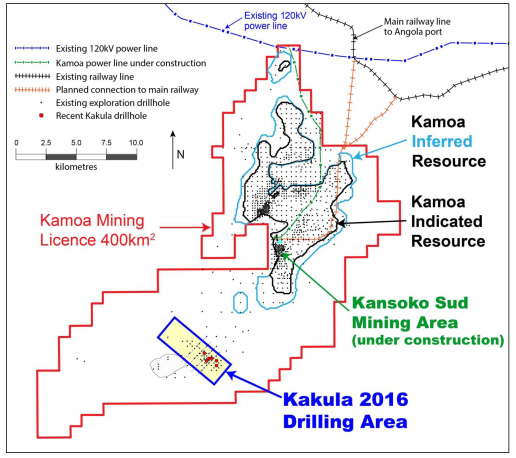
Figure 3. Intercept from DD1054, an in-fill hole near the centre of the Kakula Discovery, with massive chalcocite at a depth of 318 metres (chalcocite is approximately 80% copper by weight).
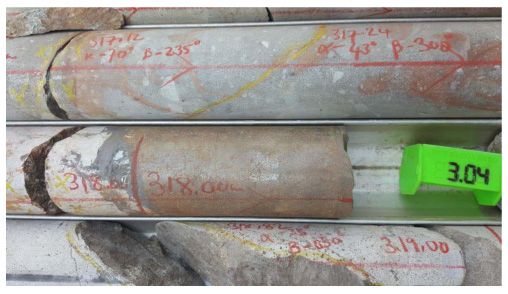
Figure 4. Strip-logs of new drill holes 001021, 001026 and 001032 showing typical Kakula-style mineralization.
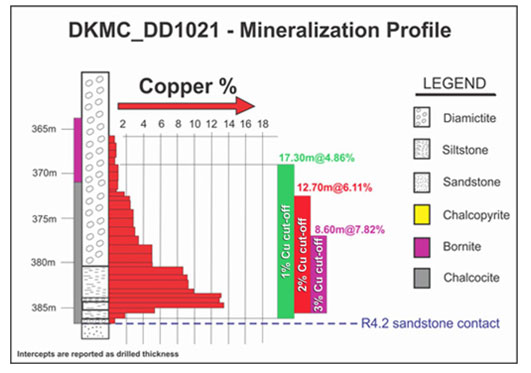
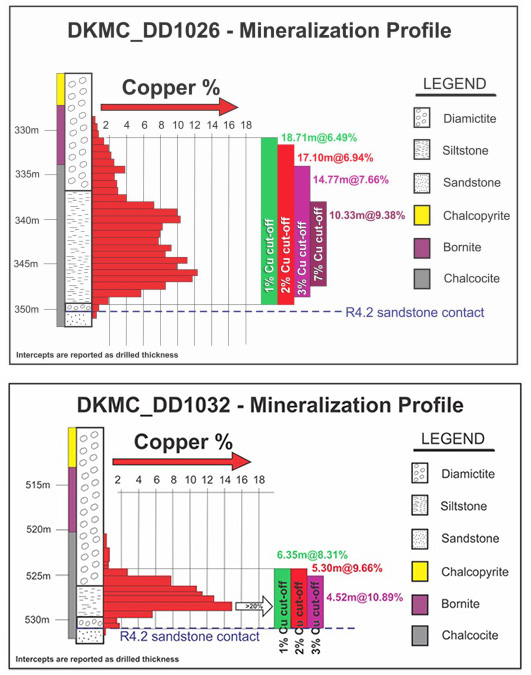
Figure 5. Kakula Discovery Area. Drill-hole location plan for the Kakula Area shows holes completed and in progress, superimposed on 1% composite grade thickness contours.
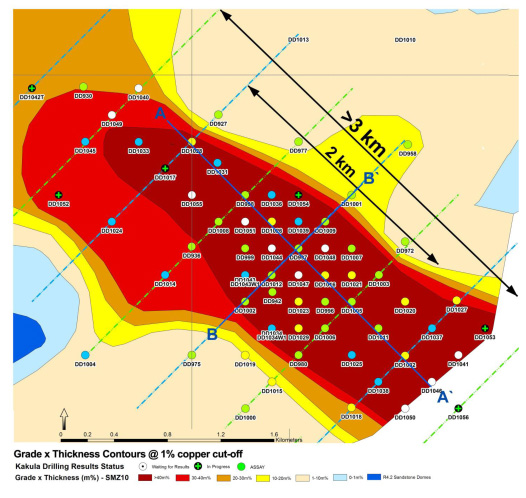
Figure 6. Recent assay results at a 1.0% copper cut-off.

Figure 7. Recent assay results at a 2.5% copper cut-off.
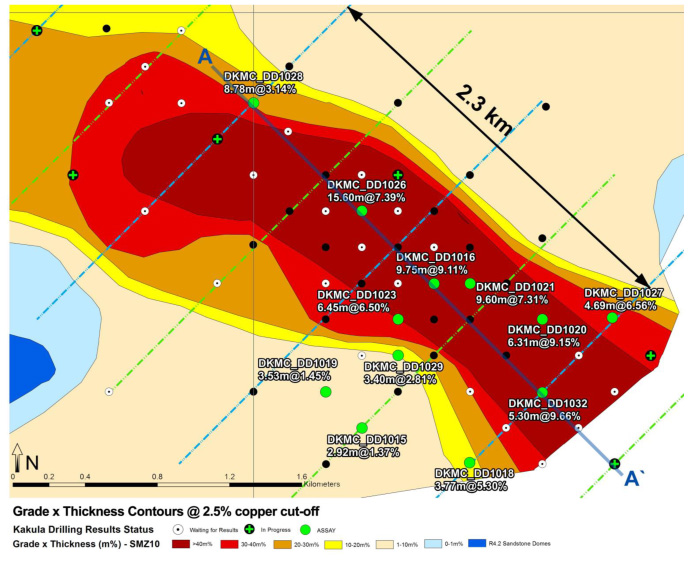
Figure 8. Recent assay results at a 3.0% copper cut-off.

Figure 9. New cross-section A-A’ of Kakula Discovery area, showing true thicknesses of drill intercepts at a 2.5% copper cut-off.
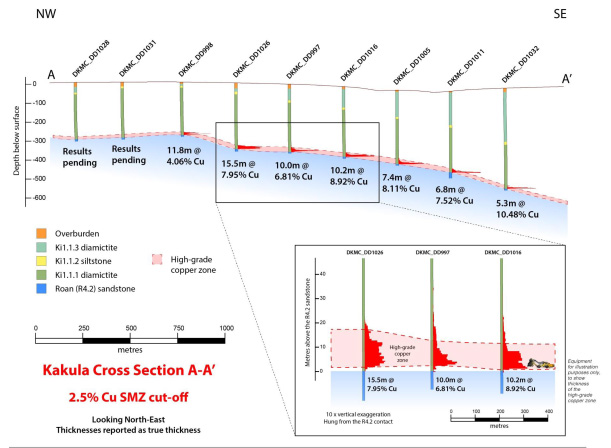
Figure 10. New cross-section A-A’ of Kakula Discovery area, showing true thicknesses of drill intercepts at a 3.0% copper cut-off.
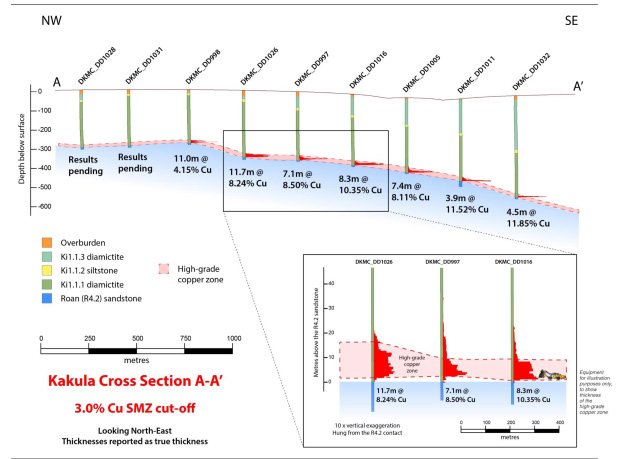
Table 1. Assay composites from newly released Kakula drill holes at various copper cut-offs.
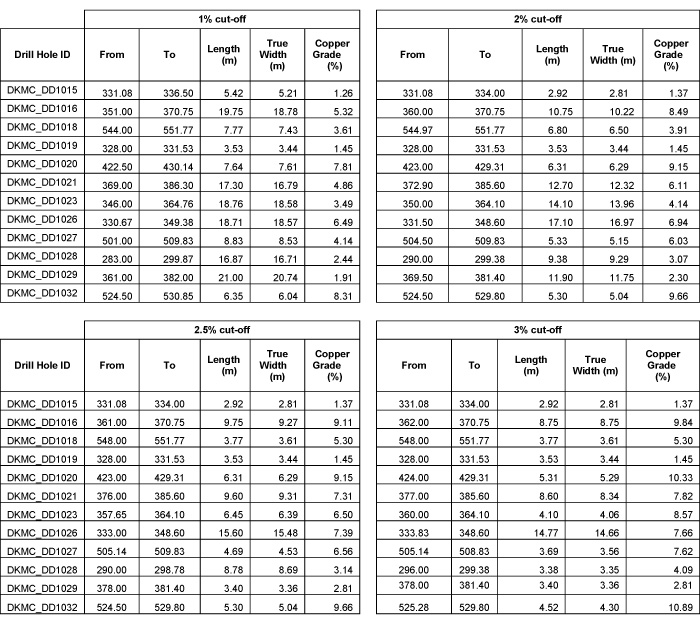
Figure 11. Drill hole DD1054 at the Kakula Discovery.

Table 2. Collars of completed drill holes at Kakula.
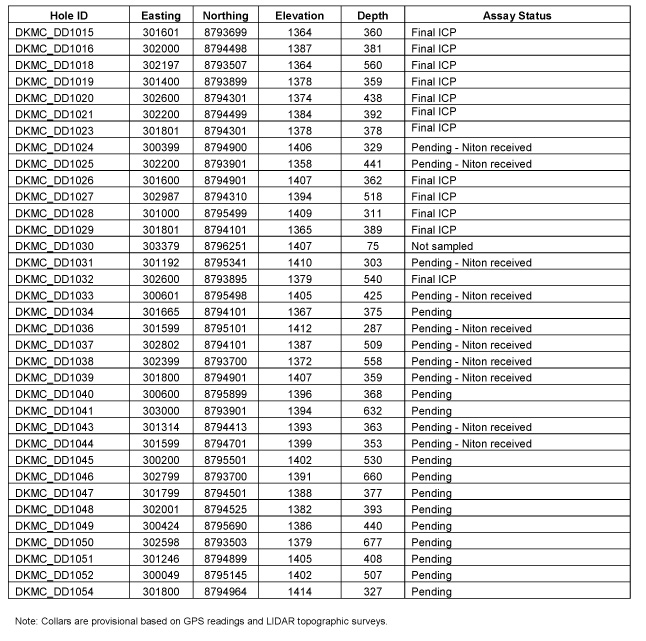
Figure 12. Workers installing a 120kV power line at the Kamoa Project.
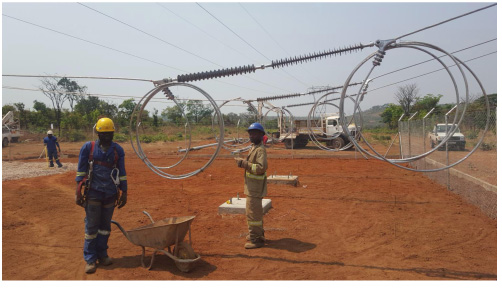
Kamoa Copper Project description
The Kamoa Copper Project, a joint venture between Ivanhoe Mines and Zijin Mining, is a very large, stratiform copper deposit with adjacent prospective exploration areas within the Central African Copperbelt, approximately 25 kilometres west of the town of Kolwezi and about 270 kilometres west of Lubumbashi. The Kamoa mining licence covers approximately 400 square kilometres.
In 2015, Ivanhoe sold a 49.5% share interest in Kamoa Holding Limited, the company that presently owns 95% of the Kamoa Project on an indirect basis, to Zijin Mining for an aggregate cash consideration of US$412 million. In addition, Ivanhoe sold a 1% share interest in Kamoa Holding to privately-owned Crystal River Global Limited for US$8.32 million, which Crystal River will pay through a non-interest-bearing, 10-year promissory note.
Kamoa is the world’s largest, undeveloped, high-grade copper deposit. On February 23, 2016, an updated Mineral Resource estimate was issued for the Kamoa Project, with an effective date of May 5, 2014. Kamoa’s Indicated Mineral Resources presently total 752 million tonnes grading 2.67% copper and containing 44.3 billion pounds of copper at a 1.0% copper cut-off grade and a minimum thickness of three metres. In addition to the Indicated Resources, the updated estimate included Inferred Mineral Resources of 185 million tonnes grading 2.08% copper and containing 8.5 billion pounds of copper, also at a 1.0% copper cut-off grade and a minimum thickness of three metres.
Qualified Person and Quality Control and Assurance
The scientific and technical information in this release has been reviewed and approved by Stephen Torr, P.Geo., Ivanhoe Mines’ Vice President, Project Geology and Evaluation, and a Qualified Person under the terms of National Instrument 43-101. Mr. Torr has verified the technical data disclosed in this news release.
Ivanhoe Mines maintains a comprehensive chain of custody and QA-QC program on assays from its Kamoa Project. Half-sawn core is processed at Kamoa’s on-site preparation laboratory and prepared samples then are shipped by secure courier to Bureau Veritas Minerals (BVM) Laboratories in Australia, an ISO17025-accredited facility. Copper assays are determined at BVM by mixed-acid digestion with ICP finish. Industry-standard certified reference materials and blanks are inserted into the sample stream prior to dispatch to BVM. For detailed information about assay methods and data verification measures used to support the scientific and technical information, please refer to the current technical report on the Kamoa Copper Project on the SEDAR profile of Ivanhoe Mines at www.sedar.com.
About Ivanhoe Mines
Ivanhoe Mines is advancing and developing its three principal projects in Sub-Saharan Africa: the Platreef platinum-palladium-gold-nickel-copper discovery in South Africa; and the Kamoa copper discovery and the high-grade Kipushi zinc-copper-lead-germanium mine in the DRC. For details, visit www.ivanhoemines.com.
Information contacts
Investors
Bill Trenaman +1.604.331.9834
Media
North America: Bob Williamson +1.604.512.4856
South Africa: Jeremy Michaels +27.82.939.4812
Cautionary statement on forward-looking information
Certain statements in this release constitute “forward-looking statements” or “forward-looking information” within the meaning of applicable securities laws, including without limitation, the timing and results of: (1) the completion of the construction of a 120kV and 11kV power line and availability of national grid power in October 2016; (2) statements regarding Ivanhoe Mines Energy and SNEL adding 11 MW of hydroelectric power from the Mwadingusha hydroelectric power station; (3) statements regarding the Kakula Discovery being a game changer in the planning for the development of the Kamoa Project; (4) statements regarding the expectation to have an initial independent Mineral Resource estimate prepared for the Kakula Discovery around the end of Q3 2016; (5) statements regarding the primary objective of the current drilling program is to confirm and expand a thick, flat- lying, bottom-loaded zone of very high-grade copper mineralization at the southern part of the Kakula Discovery area that has the potential to have a significant, positive impact on the Kamoa Project’s future development plans; (6) statements regarding the plan to drill approximately 34,000 metres at Kakula this year; (7) statements regarding the high-grade Kakula zone remains open along a southeasterly and northwesterly strike; (8) statements regarding the development of the twin declines at Kamoa and the expectation that development will reach the high-grade copper mineralization at the Kansoko Sud deposit during the first quarter of 2017; (9) statements regarding the expectation that a reactivated DRC railway will be capable of moving large volumes of copper concentrate from the Kolwezi area in the DRC; (10) statements regarding the expectation that Kamoa’s concentrates will attract a significant premium from copper-concentrate traders for use in blending with concentrates from other mines; and (11) statements regarding the timing and terms of transfer of an additional 15% interest in the Kamoa Project to the DRC government. Such statements involve known and unknown risks, uncertainties and other factors which may cause the actual results, performance or achievements of the company, or industry results, to be materially different from any future results, performance or achievements expressed or implied by such forward-looking statements or information. Such statements can be identified by the use of words such as “may”, “would”, “could”, “will”, “intend”, “expect”, “believe”, “plan”, “anticipate”, “estimate”, “scheduled”, “forecast”, “predict” and other similar terminology, or state that certain actions, events or results “may”, “could”, “would”, “might” or “will” be taken, occur or be achieved. These statements reflect the company’s current expectations regarding future events, performance and results and speak only as of the date of this release.
All such forward-looking information and statements are based on certain assumptions and analyses made by Ivanhoe Mines’ management in light of their experience and perception of historical trends, current conditions and expected future developments, as well as other factors management believe are appropriate in the circumstances. These statements, however, are subject to a variety of risks and uncertainties and other factors that could cause actual events or results to differ materially from those projected in the forward-looking information or statements including, but not limited to, unexpected changes in laws, rules or regulations, or their enforcement by applicable authorities; the failure of parties to contracts to perform as agreed; social or labour unrest; changes in commodity prices; unexpected failure or inadequacy of infrastructure, or delays in the development of infrastructure, and the failure of exploration programs or other studies to deliver anticipated results or results that would justify and support continued studies, development or operations. Other important factors that could cause actual results to differ from these forward-looking statements also include those described under the heading “Risk Factors” in the company’s most recently filed MD&A as well as in the most recent Annual Information Form filed by Ivanhoe Mines. Readers are cautioned not to place undue reliance on forward-looking information or statements. The factors and assumptions used to develop the forward-looking information and statements, and the risks that could cause the actual results to differ materially are set forth in the “Risk Factors” section and elsewhere in the company’s most recent Management’s Discussion and Analysis report and Annual Information Form, available at www.sedar.com.
This news release also contains references to estimates of Mineral Resources. The estimation of Mineral Resources is inherently uncertain and involves subjective judgments about many relevant factors. Mineral Resources that are not Mineral Reserves do not have demonstrated economic viability. The accuracy of any such estimates is a function of the quantity and quality of available data, and of the assumptions made and judgments used in engineering and geological interpretation, which may prove to be unreliable and depend, to a certain extent, upon the analysis of drilling results and statistical inferences that may ultimately prove to be inaccurate. Mineral Resource estimates may have to be re-estimated based on, among other things: (i) fluctuations in copper; (ii) results of drilling; (iii) results of metallurgical testing and other studies; (iv) changes to proposed mining operations, including dilution; (v) the evaluation of mine plans subsequent to the date of any estimates; and (vi) the possible failure to receive required permits, approvals and licences.
Although the forward-looking statements contained in this news release are based upon what management of the company believes are reasonable assumptions, the company cannot assure investors that actual results will be consistent with these forward-looking statements. These forward-looking statements are made as of the date of this news release and are expressly qualified in their entirety by this cautionary statement. Subject to applicable securities laws, the company does not assume any obligation to update or revise the forward-looking statements contained herein to reflect events or circumstances occurring after the date of this news release.


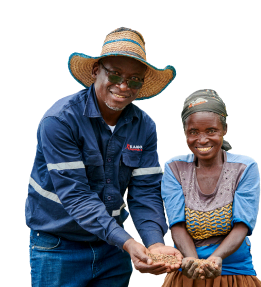
 English
English Français
Français 日本語
日本語 中文
中文